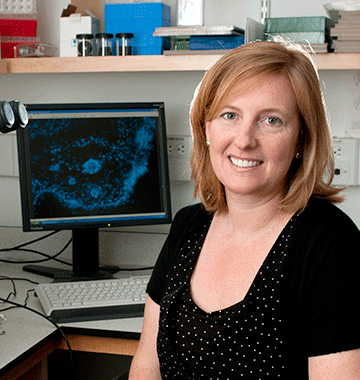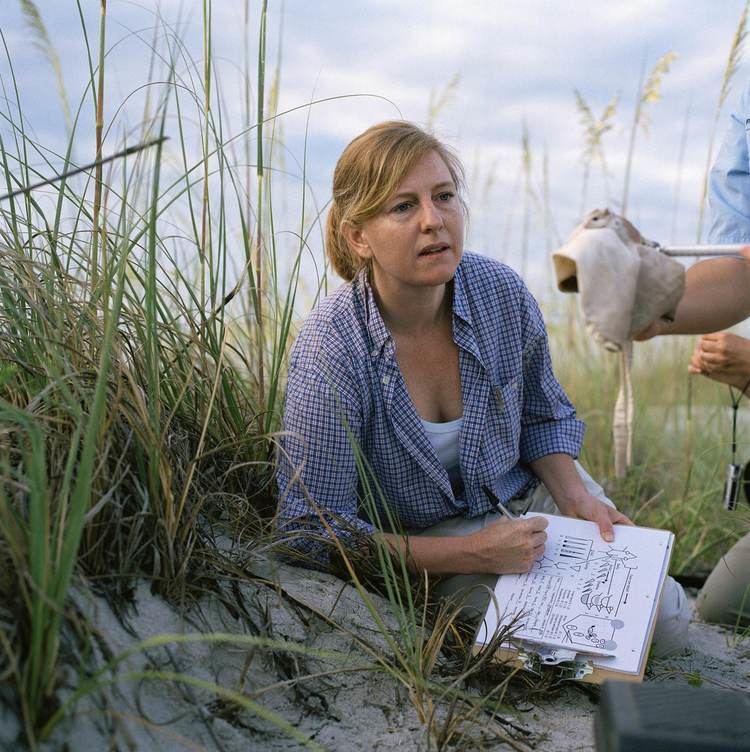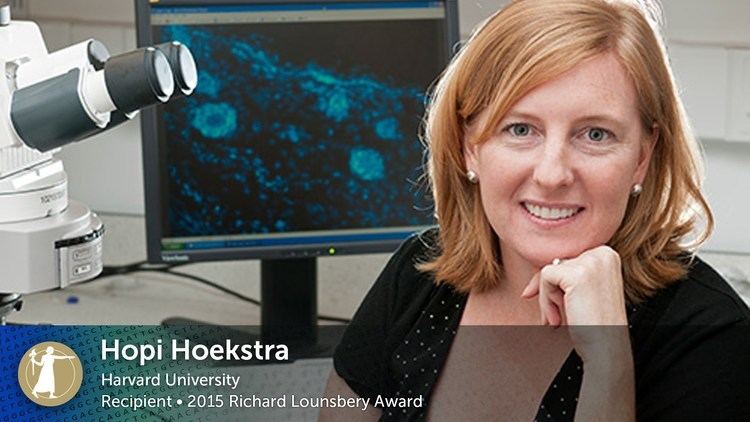Fields Evolutionary biologyDevelopmentGeneticsNeurobiology Notable awards National Academy of Sciences (elected in 2016)Richard Lounsbery Award (2015) | ||
Genetics of wild mice behavior hopi hoekstra
Hopi Hoekstra is an evolutionary biologist working at Harvard University in Cambridge, Massachusetts. Her lab uses natural populations of rodents to study the genetic basis of adaptation – from morphology to behavior. She is the Alexander Agassiz Professor of Zoology in the Department of Organismic and Evolutionary Biology and the Department of Molecular and Cellular Biology at Harvard University. She is also the Curator of Mammals at the Museum of Comparative Zoology and a Harvard College Professor. In 2014 Hoekstra became a Howard Hughes Medical Institute (HHMI) Investigator. In 2016 Hoekstra was elected to the National Academy of Sciences.
Contents
- Genetics of wild mice behavior hopi hoekstra
- Genetics of color adaptation hopi hoekstra
- Early life
- Career
- Research
- Honors and Awards
- Family
- Selected publications
- References
Genetics of color adaptation hopi hoekstra
Early life

Hopi Hoekstra's parents were born in the Netherlands, before moving to the United States. Hoekstra's first name "Hopi" is derived from a Dutch term of endearment. Hoekstra attended a high-school near Palo Alto, in California. She chose to attend college at the University of California, Berkeley, where she initially intended to study political science. She chose the university because she wanted to play Pac-10 volleyball, which she did for two years. She has stated that at one point she wanted to become the U.S. ambassador to the Netherlands, but she was drawn into biology by a class on biomechanics taught by Robert J. Full. She went on to work in Full's lab, studying cockroach locomotion. However, she later stated that she had a passion for fieldwork and for mice even at that point.
Career

Hopi Hoekstra received her B.A. in Integrative Biology from UC Berkeley. Before her graduate studies, she worked on grizzly bears for a year in Yellowstone National Park. She obtained her Ph.D. in Zoology as a Howard Hughes Predoctoral Fellow at the University of Washington, Seattle. For her postdoctoral work, she studied the genetic basis of adaptive melanism in pocket mice at the University of Arizona. In 2003, she became an Assistant Professor at UC San Diego. Three years later she moved to Harvard University, where she was promoted to full professor in the Department of Organismic and Evolutionary Biology and the Department of Molecular and Cellular Biology in 2010.
Research

Hoekstra is best known for her “elegant and inventive research” studying the genetic mechanisms that influence the evolution of highly complex natural behaviors. In 2013, Hoekstra published an article in the journal Nature on the genetics of burrowing behavior in two sister species of Peromyscus mice; the oldfield mouse (P. polionotus), which builds elaborate burrows complete with an escape tunnel, and the deer mouse (P. maniculatis), which builds a simple and shallow nest. The study is unusual for dealing with a highly complex natural behavior. Using a combination of behavioral assays and classical genetic strategies, Hoekstra and her students identified four regions of DNA, which control the length of the tunnels dug by the mice. With these sections of DNA in mind, Hoekstra is currently trying to narrow down the specific genes that control tunneling behavior in mice. Students in her lab are also studying the connections between digging behavior and the neurobiology of reward.

She has also previously studied the evolution of the color of mice coats, and its significance for adaptation. In 2013 her team published a paper in the journal Science, describing how coat color in mice was controlled by nine separate mutations within a single gene, named "agouti." Speaking about this discovery, Hoekstra said "The question has always been whether evolution is dominated by these big leaps or smaller steps. When we first implicated the agouti gene, we could have stopped there and concluded that evolution takes these big steps as only one major gene was involved, but that would have been wrong. When we looked more closely, within this gene, we found that even within this single locus, there are, in fact, many small steps." Her work supports the hypothesis that Evolution can occur through incremental changes.
Honors and Awards

Family

Hoekstra lives in Cambridge, Massachusetts with her son and her husband, James Mallet. Mallet is also an evolutionary biologist at Harvard.
